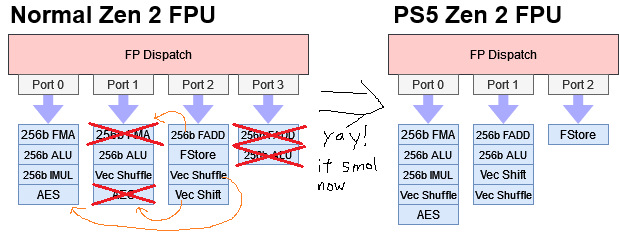HJuggernaut
Member
Asymmetrical CPU cores and GPU Compute Units combined with an intelligent task scheduler, offer significant benefits for video game consoles by optimizing performance, power efficiency, and responsiveness. In this architecture, high-performance cores handle demanding tasks like physics calculations and AI, while smaller efficiency cores manage background operations such as audio processing or system services without wasting power. Similarly, GPU CUs can be designed with varying capabilities—some optimized for complex shading and others for simpler rendering or post-processing. A smart scheduler dynamically assigns workloads based on the nature and priority of each task, ensuring that resources are used efficiently. This enables smoother frame rates, reduced latency, and improved thermal performance, all while extending hardware lifespan and supporting more immersive and complex game worlds without requiring developers to micromanage hardware resources.
yes I used chatgpt but its my idea.
yes I used chatgpt but its my idea.









